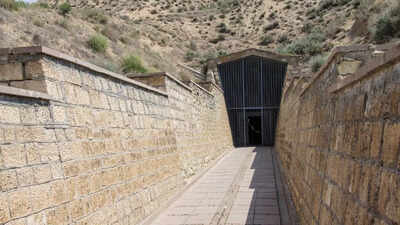Untouched 2,800-year-old tomb from King Midas’ era discovered—here’s what was found inside

In the heart of ancient Phrygia, beneath a mound of earth untouched for nearly three millennia, archaeologists have uncovered a royal tomb so pristine it’s as though time itself stood still. Buried in silence since around 750 B.C., the tomb—dubbed Tumulus T-26—was found at the Gordion archaeological site, about 60 miles southwest of Ankara, Turkey. This is the same city that once served as the capital of the Phrygian kingdom, a place forever etched into legend as the domain of the fabled King Midas.The discovery, made after four intense months of excavation, is being hailed as one of the most significant archaeological finds in years—not just for its incredible preservation, but for what it reveals about ancient royal burial practices, family lineages, and long-lost customs of the 8th century B.C.
A tomb of royal wealth, left untouched
The burial chamber, hidden beneath the earth for nearly 2,800 years, has remained miraculously untouched by looters. Inside, researchers found bronze cauldrons, iron tools, and other high-value artifacts, all suggesting the burial belonged to someone of royal blood—very likely a member of Midas’ own family.

Credit: Facebook/Türkiye Cumhuriyeti Kültür ve Turizm Bakanlığı’s post
“This tomb was located very close to the burial mound of King Midas’ father,” said C. Brian Rose, an archaeologist from the University of Pennsylvania and director of the Gordion excavations, in a conversation with Fox News Digital. “Royal tombs are often clustered together, and given its location and richness, it’s reasonable to believe this individual was a close relative.”The body inside had been cremated, another significant find that offers insight into Phrygian burial rituals. The bronze vessels, Rose said, “attest to a high level of wealth,” and would have likely been used during the funeral feast—a ceremonial meal to honor the deceased.
What the ancient Phrygians ate at a funeral
While the newly found cauldrons didn’t contain any food residue, earlier discoveries at the same site provide clues about what was likely served. During the excavation of Midas’ father’s tomb in 740 B.C., researchers found remnants of a spicy stew made from lentils and barbecued sheep or goat, paired with a ceremonial drink blending grape wine, barley beer, and honey mead.“That was a funeral feast,” Rose noted. “It gives us a remarkably detailed glimpse into the culinary and ritualistic life of the Phrygian elite.”The T-26 tomb joins a growing list of extraordinary finds at Gordion. Another nearby burial site, Tumulus T-52, contained more than 3,000 amber beads, forming what Rose called “one of the largest assemblages of amber found anywhere in the ancient world.” Scientific testing revealed that the amber originated in the Baltic region, pointing to extensive trade routes that connected the Phrygian kingdom with far-off lands.

Credit: Facebook/Türkiye Cumhuriyeti Kültür ve Turizm Bakanlığı’s post
“This is the kind of feature one would expect in a royal assemblage,” Rose added.
Who was King Midas—legend vs. reality
In ancient Greek and Roman mythology, Midas was the king of Phrygia, known less for his governance and more for the fantastical tale of the “golden touch.”According to the myth, after showing hospitality to Silenus, a satyr companion of the god Dionysus, Midas was granted a wish. He asked that everything he touched turn to gold.At first delighted, Midas soon found his food, his drink, and even his daughter transformed into lifeless metal. Realizing the curse, he begged Dionysus to take the power away. The god instructed him to wash in the Pactolus River, and from that moment, the sands of the river were said to carry gold.Another tale tells of Midas judging a music contest between Apollo and Pan. When he ruled in favor of Pan, Apollo punished him by giving him the ears of a donkey. Ashamed, Midas wore a turban to hide them. But his barber, unable to keep the secret, whispered it into a hole in the ground. Reeds later grew from that spot—and when the wind blew through them, they whispered the truth to the world: “Midas has ass’s ears.”Though wrapped in myth, the recent discoveries at Gordion bring us closer to understanding the real world that inspired the legend—a world of power, trade, ritual, and royal splendor buried beneath centuries of soil, now seeing the light once again.







